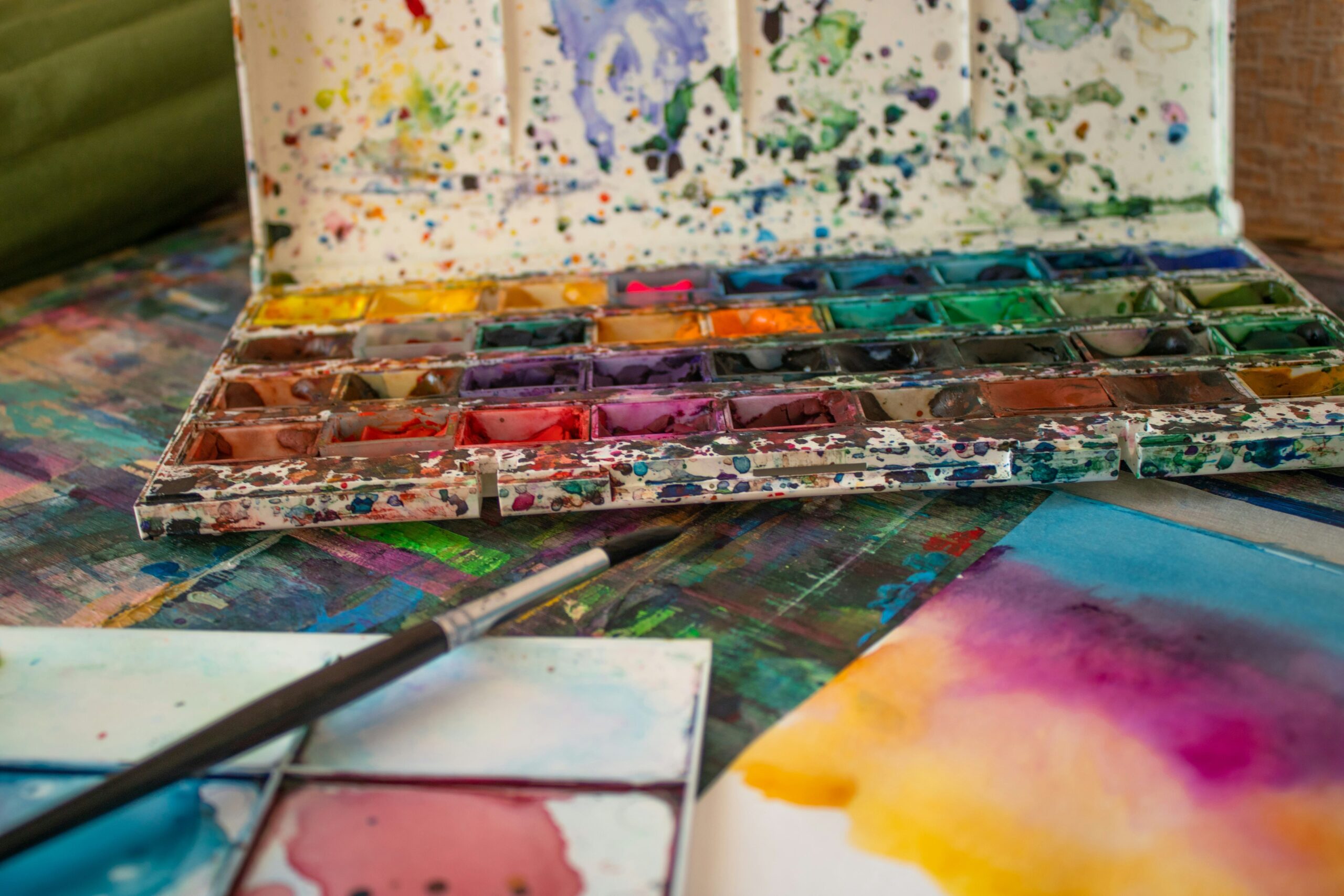Now Reading: Art Therapy for Mental Health and Addiction
-
01
Art Therapy for Mental Health and Addiction
Art Therapy for Mental Health and Addiction

Explore the benefits of art therapy for mental health and addiction. Heal emotionally, reduce stress, and express yourself through creative expression.
Introduction
Mental health struggles and addiction often leave people feeling overwhelmed, isolated, and unable to express what they’re going through. Talk therapy can be helpful, but for many, it’s not always easy to find the right words. That’s where art therapy for mental health and addiction comes in.
Art therapy offers a safe and creative space to explore emotions, reduce stress, and begin healing. Whether through painting, drawing, or collage, art therapy helps individuals reconnect with themselves, process difficult experiences, and build a more balanced life.
What Is Art Therapy?
Art therapy is a form of psychotherapy that uses the creative process as a tool for emotional healing. A licensed art therapist guides individuals in using different art forms—such as painting, sketching, or sculpture—to express and explore feelings, memories, and thoughts.
Unlike traditional art classes, the goal is not to create a masterpiece. Instead, it’s about the process—using creativity to understand what’s going on inside and begin working through it.
📊 According to the American Art Therapy Association, art therapy helps improve emotional well-being, manage stress, and promote recovery in people facing addiction and mental health challenges 1.
How Art Therapy Supports Mental Health
🎨 1. It Encourages Emotional Expression
Many people struggle to talk about their emotions. Art therapy allows them to express feelings visually. Anger, sadness, fear, and even hope can come through in color, shape, and form.
This kind of expression is especially useful for people who have experienced trauma. Art becomes a voice when words fall short.
🧠 2. It Reduces Anxiety and Depression
The simple act of creating art can be calming. It encourages deep breathing, focus, and mindfulness—skills that help regulate mood. Studies show that participating in art therapy can lower levels of cortisol, the stress hormone, and improve symptoms of depression and anxiety.
📊 A 2016 study published in Art Therapy: Journal of the American Art Therapy Association found that just 45 minutes of creative activity significantly lowered stress levels in participants 2.
🖼 3. It Improves Self-Esteem
Creating something with your hands can boost confidence. For individuals struggling with mental illness or addiction, art therapy helps rebuild a sense of identity and worth.
As clients create, they often feel more in control and begin to believe in their ability to heal.
How Art Therapy Helps in Addiction Recovery
🔄 1. Breaks the Cycle of Avoidance
Addiction often stems from a desire to avoid pain or discomfort. Art therapy gently brings these emotions to the surface in a safe, nonjudgmental way. Instead of numbing or avoiding, individuals learn to face and understand their feelings.
🛠 2. Replaces Negative Habits with Healthy Ones
Building a new routine is a key part of recovery. Attending art therapy sessions, creating art at home, or journaling visually can become healthy coping mechanisms that replace old patterns.
📊 Research in the Journal of Substance Abuse Treatment suggests that creative therapies, including art therapy, enhance emotional regulation and reduce the risk of relapse when combined with traditional treatments 3.
🤝 3. Builds Connection and Support
Group art therapy fosters a sense of community. Sharing artwork with others who understand the journey of recovery can be healing in itself. It reduces isolation and reminds people they’re not alone.

Common Art Therapy Techniques
Here are some simple but powerful techniques used in art therapy for mental health and addiction recovery:
✍️ Visual Journaling
Clients keep a sketchbook to track emotions, cravings, or victories using symbols and colors.
🎭 Mask Making
Creating masks helps explore inner and outer identities—what we show the world vs. what we hide.
🎨 Mandalas
Drawing or coloring circular patterns promotes focus, calmness, and spiritual balance.
📸 Collage Work
Cutting and pasting images can express future goals, emotional states, or trauma narratives in a visual way.
👥 Group Art Projects
Shared canvases or murals encourage connection and teamwork in group settings.
Who Can Benefit from Art Therapy?
Art therapy for mental health and addiction is beneficial for people of all ages and backgrounds. It’s particularly useful for:
- Individuals recovering from substance use disorders
- People dealing with anxiety, depression, or PTSD
- Survivors of trauma
- Teens and young adults who struggle to express emotions
- Anyone feeling stuck or overwhelmed by their mental health journey
No artistic skill is required. Everyone can benefit from the act of creating.
How to Get Started
1. Find a Licensed Art Therapist
Search through the American Art Therapy Association’s directory or ask your therapist or treatment center for recommendations.
2. Join a Recovery Program That Includes Art Therapy
Many residential or outpatient rehab centers now offer art therapy as part of their holistic treatment approach.
3. Try Creative Expression at Home
While formal art therapy should be guided by a professional, creative self-care practices—like drawing, coloring, or painting—can also support healing when used mindfully.
Final Thoughts
Healing isn’t always about words. Sometimes, the deepest transformation comes from color, shape, texture, and image. That’s the power of art therapy for mental health and addiction—it gives people a way to reconnect with their emotions, tell their story, and rediscover hope.
If you or someone you love is navigating recovery, consider adding art therapy to the journey. It’s a tool that doesn’t just heal—it empowers.
“Art speaks where words are unable to explain.” – Unknown
References
- American Art Therapy Association. (2022). What is Art Therapy? Retrieved from https://arttherapy.org ↩
- Kaimal, G., Ray, K., & Muniz, J. (2016). Reduction of Cortisol Levels and Participants’ Responses Following Art Making. Art Therapy: Journal of the American Art Therapy Association, 33(2), 74–80. ↩
- Stuckey, H. L., & Nobel, J. (2010). The Connection Between Art, Healing, and Public Health: A Review of Current Literature. American Journal of Public Health, 100(2), 254–263. ↩
























